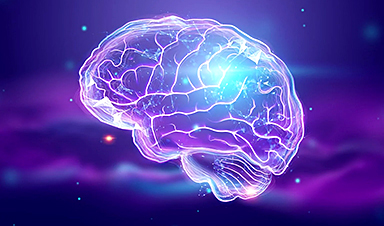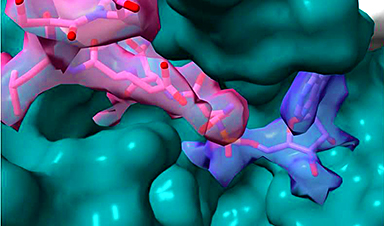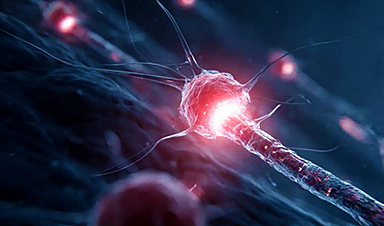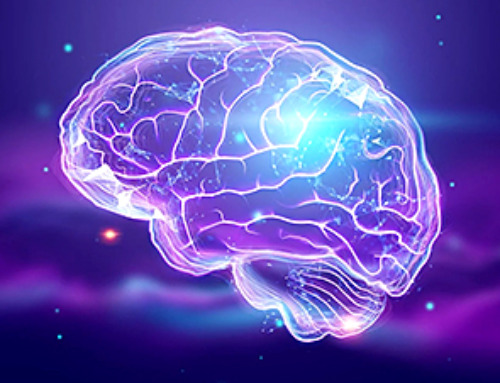- Since the early days of computer science, scientists have been exploring the idea of using DNA to store data.
- MIT has developed an amber-like polymer that can keep DNA intact and preserve it for a long time.
DNA, or deoxyribonucleic acid, is the molecule of life. While there are other essential molecules for life as we know it, DNA holds a special significance because it contains the instructions that cells use to produce proteins or RNA (ribonucleic acid) molecules. DNA is also responsible for genetic inheritance. However, this is far from everything DNA can be used for.
Since the early days of computing, scientists have been intrigued by the idea of using DNA to encode and store information, similar to how it functions naturally within living organisms. However, they’ve encountered challenges in manipulating DNA and preserving it over time without degradation, making it difficult to recover stored information in perfect condition.
Chemist James Banal, Jeremiah Johnson, and other scientists at the Massachusetts Institute of Technology argue that DNA is the future of data storage. They also believe that DNA’s density is so high that it’d be possible to store all the information currently contained in all the computers and servers worldwide in a coffee cup if it were filled with DNA molecules. Because of the work of these scientists, we’re now closer than ever to achieving this goal.
Michael Crichton Was Right
In Michael Crichton’s science fiction novel Jurassic Park, the premise is that dinosaur DNA can remain in good condition for millions of years inside an amber crystal. The MIT researchers have developed a polymer that can preserve DNA in a manner similar to the amber in Crichton’s novel, bringing this idea closer to reality.
In an article published in the Journal of the American Chemical Society, the authors discuss their “T-REX” (named after the popular dinosaur, also seen in Jurassic Park) method, which enables DNA to be preserved intact for extended periods, potentially serving as a storage method for massive amounts of information or even the entire human genome.
Unlike current preservation methods that require low temperatures and high energy usage, the polymer developed by MIT allows DNA molecules to be preserved at room temperature while protecting them from heat and water to prevent degradation. To demonstrate how their innovation works, the researchers encoded the main theme of the Jurassic Park movie soundtrack and a complete human genome into DNA within their polymer, successfully recovering it without damage.
“Freezing DNA is the number one way to preserve it, but it’s very expensive, and it’s not scalable… I think our new preservation method is going to be a technology that may drive the future of storing digital information on DNA,” Banal told MIT News.
While this technology holds promise, it’s still in the early stages of development, and many innovations fail to progress beyond the lab and stablish within the industry. However, the potential of this “T-REX” technology could revolutionize storage systems in the future and one day possibly replacing solid-state drives in computers.
News
New Once-a-Week Shot Promises Life-Changing Relief for Parkinson’s Patients
A once-a-week shot from Australian scientists could spare people with Parkinson’s the grind of taking pills several times a day. The tiny, biodegradable gel sits under the skin and releases steady doses of two [...]
Weekly injectable drug offers hope for Parkinson’s patients
A new weekly injectable drug could transform the lives of more than eight million people living with Parkinson's disease, potentially replacing the need for multiple daily tablets. Scientists from the University of South Australia [...]
Most Plastic in the Ocean Is Invisible—And Deadly
Nanoplastics—particles smaller than a human hair—can pass through cell walls and enter the food web. New research suggest 27 million metric tons of nanoplastics are spread across just the top layer of the North [...]
Repurposed drugs could calm the immune system’s response to nanomedicine
An international study led by researchers at the University of Colorado Anschutz Medical Campus has identified a promising strategy to enhance the safety of nanomedicines, advanced therapies often used in cancer and vaccine treatments, [...]
Nano-Enhanced Hydrogel Strategies for Cartilage Repair
A recent article in Engineering describes the development of a protein-based nanocomposite hydrogel designed to deliver two therapeutic agents—dexamethasone (Dex) and kartogenin (KGN)—to support cartilage repair. The hydrogel is engineered to modulate immune responses and promote [...]
New Cancer Drug Blocks Tumors Without Debilitating Side Effects
A new drug targets RAS-PI3Kα pathways without harmful side effects. It was developed using high-performance computing and AI. A new cancer drug candidate, developed through a collaboration between Lawrence Livermore National Laboratory (LLNL), BridgeBio Oncology [...]
Scientists Are Pretty Close to Replicating the First Thing That Ever Lived
For 400 million years, a leading hypothesis claims, Earth was an “RNA World,” meaning that life must’ve first replicated from RNA before the arrival of proteins and DNA. Unfortunately, scientists have failed to find [...]
Why ‘Peniaphobia’ Is Exploding Among Young People (And Why We Should Be Concerned)
An insidious illness is taking hold among a growing proportion of young people. Little known to the general public, peniaphobia—the fear of becoming poor—is gaining ground among teens and young adults. Discover the causes [...]
Team finds flawed data in recent study relevant to coronavirus antiviral development
The COVID pandemic illustrated how urgently we need antiviral medications capable of treating coronavirus infections. To aid this effort, researchers quickly homed in on part of SARS-CoV-2's molecular structure known as the NiRAN domain—an [...]
Drug-Coated Neural Implants Reduce Immune Rejection
Summary: A new study shows that coating neural prosthetic implants with the anti-inflammatory drug dexamethasone helps reduce the body’s immune response and scar tissue formation. This strategy enhances the long-term performance and stability of electrodes [...]
Scientists discover cancer-fighting bacteria that ‘soak up’ forever chemicals in the body
A family of healthy bacteria may help 'soak up' toxic forever chemicals in the body, warding off their cancerous effects. Forever chemicals, also known as PFAS (per- and polyfluoroalkyl substances), are toxic chemicals that [...]
Johns Hopkins Researchers Uncover a New Way To Kill Cancer Cells
A new study reveals that blocking ribosomal RNA production rewires cancer cell behavior and could help treat genetically unstable tumors. Researchers at the Johns Hopkins Kimmel Cancer Center and the Department of Radiation Oncology and Molecular [...]
AI matches doctors in mapping lung tumors for radiation therapy
In radiation therapy, precision can save lives. Oncologists must carefully map the size and location of a tumor before delivering high-dose radiation to destroy cancer cells while sparing healthy tissue. But this process, called [...]
Scientists Finally “See” Key Protein That Controls Inflammation
Researchers used advanced microscopy to uncover important protein structures. For the first time, two important protein structures in the human body are being visualized, thanks in part to cutting-edge technology at the University of [...]
AI tool detects 9 types of dementia from a single brain scan
Mayo Clinic researchers have developed a new artificial intelligence (AI) tool that helps clinicians identify brain activity patterns linked to nine types of dementia, including Alzheimer's disease, using a single, widely available scan—a transformative [...]
Is plastic packaging putting more than just food on your plate?
New research reveals that common food packaging and utensils can shed microscopic plastics into our food, prompting urgent calls for stricter testing and updated regulations to protect public health. Beyond microplastics: The analysis intentionally [...]





















